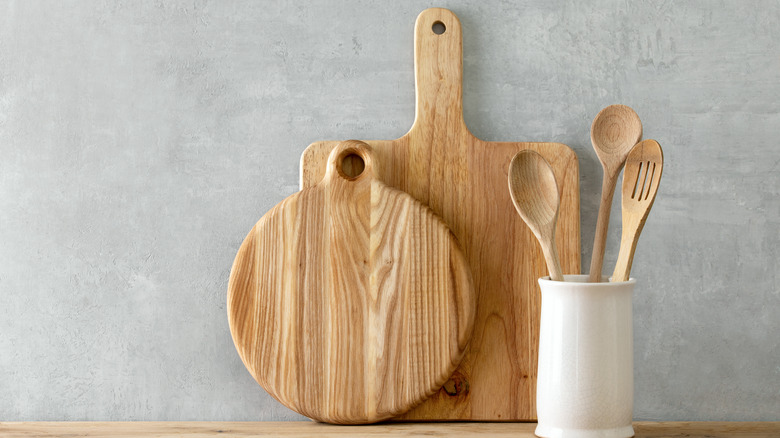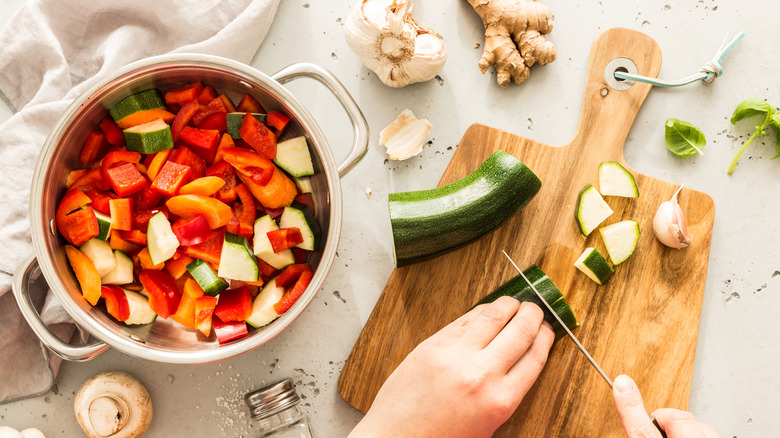You've Been Cleaning Your Cutting Boards Wrong This Whole Time
Wooden cutting boards aren't just beautiful accent pieces in well-stocked kitchens — they are durable, the perfect partner for the kitchen knife, and are well-loved staples for folks who love to cook. The battle has raged on, however, whether plastic or wooden cutting boards are more sanitary. Many have made the assumption that because wood is naturally porous and plastic is not, wood would retain more bacteria and food particles, making plastic the safer choice. However, some may forget that because plastic cutting boards tend to be cut and scratched more easily than wood, they also invite bacteria growth. In fact, studies have shown that plastic cutting boards are more prone to growing unwanted bacteria and harboring food particles than wooden cutting boards for this very reason (via The Huffington Post).
So if you are going to choose a nice butcher's block-style wooden cutting board or a plastic alternative, it's important that you know how to clean it. Our inclination might be to toss it into the dishwasher to sanitize it, but in reality, this could backfire.
Let's start with plastic boards. The best way to clean your plastic cutting board, according to The Kitchn, is to soak the board in white vinegar and then scrub it with a baking soda/salt mixture. This will allow stains on the surface to lift. Wooden boards, however, aren't as easy to maintain.
How to properly care for your wooden cutting board
While dishwashers (don't forget to regularly clean them, too) are excellent at sanitizing, the heat and water can cause wood to split. Once the wood splits, it has the same problem as plastic cutting boards — cracks are ideal hiding spots for bacteria, which can lead to food-borne illness (via Real Simple). Instead, hand-washing your board is essential, and doing so will help maintain wood's natural anti-microbial nature.
But how do you clean it thoroughly while preventing cracks? After washing with soap and hot water, leave the board to dry upright (via Chowhound). You should also deep clean it regularly, and there are a few options for doing this. To remove stains, use a combination of lemon juice and kosher salt. Simply put some coarse salt on the wood, and use a halved lemon to rub the board, allowing the lemon juice to coat it. Let sit for five minutes, rinse, and let dry. To disinfect, use a mixture of vinegar and water, opt for hydrogen peroxide, or mix a tablespoon of bleach in a gallon of water. Then rinse thoroughly and allow to dry. To prevent cracking, regularly oil your wooden board (via The Kitchn). After drying, simply take some mineral oil on a soft cloth and rub all over. Allow to soak in, ideally overnight, and then wipe off any excess oil.
If you're still hesitant about your cutting board's cleanliness, remember that you should be replacing it once it looks damaged.

